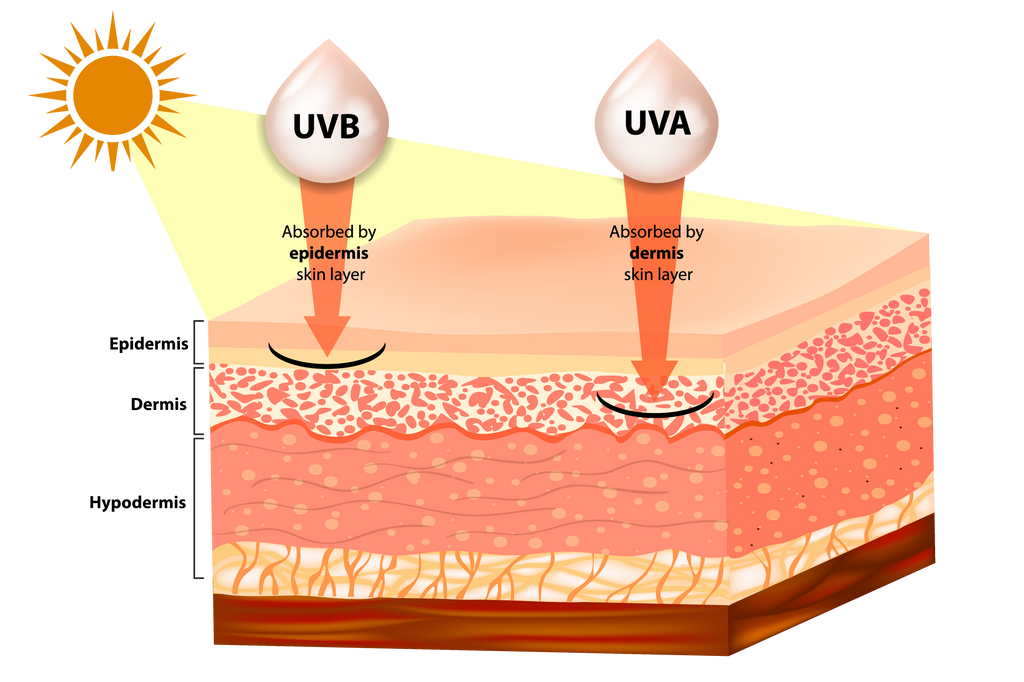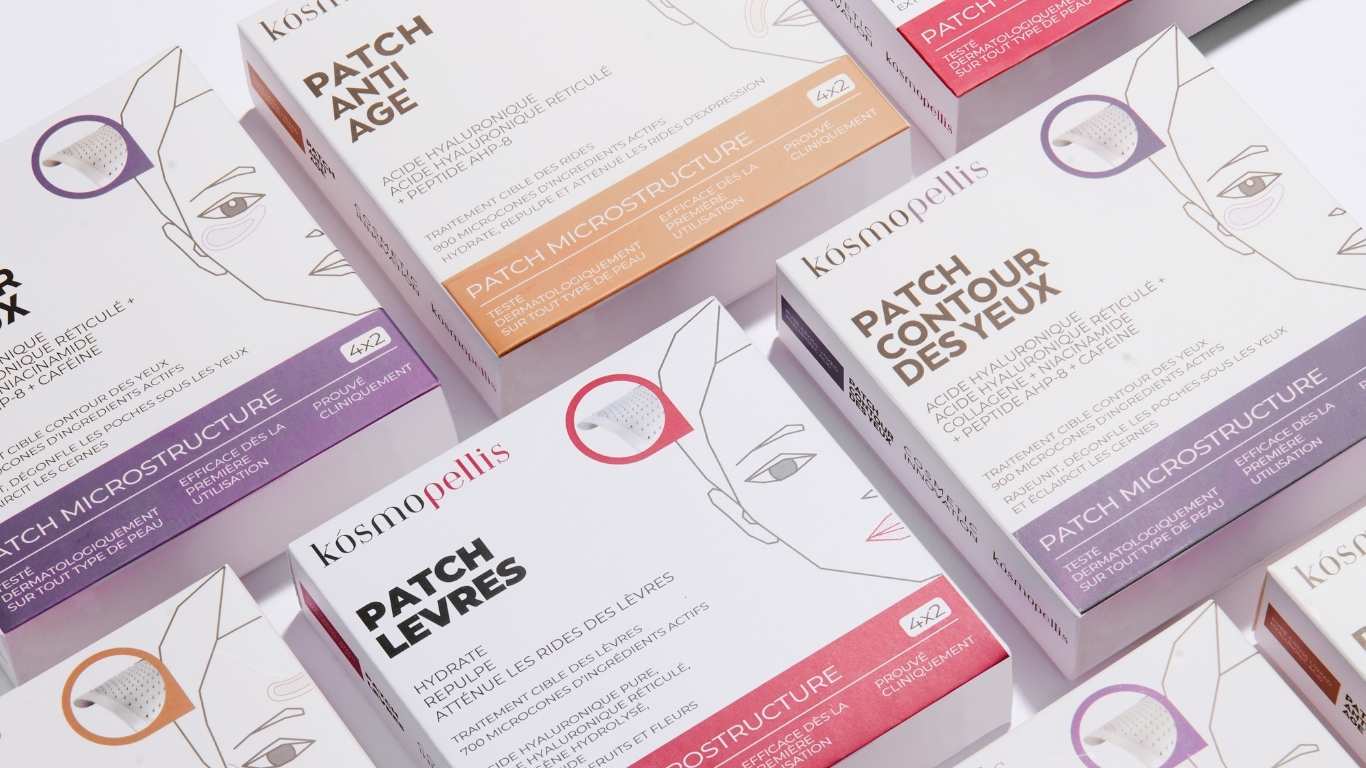
Sunscreen for your skin
What makes the subject of sun protection so complicated?! Well, first of all, it's about... Choosing sun protection for your skin. Above all, we are talking about high quality and safe to use ingredients. Among the multitude of products, it can be difficult to find a sunscreen that provides adequate protection while being free of toxic ingredients.
High flow protection, water repellent and high sun protection factor
It's best to choose a broad-spectrum, water-repellent sunscreen with a minimum SPF of 30. This ensures that your skin is protected from UVA and UVB rays and that this protection is not compromised by occasional sweating or swimming. A quick note on SPF: an ultra-high SPF does not necessarily mean that your skin will be fully protected throughout the day. You should always reapply sunscreen every two hours to ensure adequate protection. But we will come back to this later.

Natural or chemical sunscreens
Also ask about mineral and chemical sunscreens, as both have very different effects on the skin. The natural variant usually forms a protective seal on the top layer of skin and protects it by deflecting UV light. Chemical sunscreens, on the other hand, contain ingredients that absorb UV light, preventing it from penetrating the skin. However, they are also completely absorbed by the skin itself, which can cause irritation, skin damage, visible signs of aging or, in some cases, even hormonal disruptions if the sunscreen is of poor quality or contains toxic ingredients such as oxybenzone.

Choosing a natural or chemical option depends on your preferences and skin type. In general, chemical sunscreens provide lightweight and often clear formulas. This makes them ideal for everyday use, regardless of skin tone. At the same time, they are perfect for the beach or training. Mineral sunscreens are made from zinc oxide, titanium dioxide, or in some cases both. This makes them softer, so ideal if you have sensitive or acne-prone skin. However, mineral sunscreen can also leave a film that makes it a little less glamorous to wear, especially on darker skin tones.
According to experts, both natural and chemical sunscreens work well. Ultimately, you decide for yourself whether you want to use a high-quality, toxin-free chemical version, prefer the natural version or combine the two according to your needs.
You should avoid these mistakes when applying
Sunscreen selected, job done? Unfortunately not quite. Applying the cream is another challenge when it comes to becoming the perfect sunscreen professional. Errors often creep in here without us realizing it. We've rounded up some of the biggest mistakes for you and given you practical tips to avoid them this summer.
Too late, too little, too old or forgotten
If you want to get a tomato look for free, you should only apply sunscreen when you are already outside. Little joke! Sunscreen should be applied at least 20 minutes before leaving the house so your skin can fully absorb the protective ingredients. Additionally, it's best to apply it before getting dressed to avoid missing areas of skin. When you're out and about, you should reapply sunscreen every two hours or so, especially after swimming or if you sweat more. This is important to reduce the amount of UV radiation that passes through the filter, which in turn has already penetrated the skin. These can lead to skin damage.

In addition, you should not be stingy when it comes to sunscreen. Too little sunscreen is often applied, which can leave streaks or lead to insufficient sun protection. A good reference is the amount of a full shot glass for the whole body and a teaspoon for the face. You must also apply sunscreen several times and, above all, evenly so that the effect is maximized and all areas are well covered. Otherwise, all your efforts will be in vain and the sunburn will not take long to appear.
A few more words about body parts left out. Besides the feet, hands and ears, the eyelids and lips are also important areas that are often forgotten. This is quite worrying because the eyelids have the highest incidence of skin cancer per unit and therefore need to be properly protected. The same goes for lips, which are more prone to skin damage because they contain little melanin, a protective pigment that gives our skin, hair and eyes their colors. So protect not only your whole body, but also your face.

Finally, you should also monitor the expiration date of your sunscreen. If you've been using the same sunscreen for five years, you're doing your skin a disservice. In principle, sunscreen lasts around three years. After that, the protection factor decreases and the cream eventually becomes ineffective. It is therefore advisable to check the date before applying. If you can't find any information on the expiration date or you're not sure how old your sunscreen is, don't hesitate and invest in a new one. Your skin will thank you.
The perfect treatment after a sunny day
Now that you have become an expert in sun protection, it is important to take care of your skin intensively even after sunbathing. Increased exposure to sun and heat can put a strain on the skin. In order to avoid possible irritations, oily or tough skin, quality and in-depth care is necessary. If you're looking for a simple yet effective way to care for your skin overnight, then And Shine's microneedling patches are for you. The patches contain only the highest quality ingredients such as hyaluronic acid and special peptides which are perfect for deeply nourishing and nourishing your skin from the inside out. With that in mind: enjoy summer – and keep shining!

Oh, and if you're wondering how to best reapply your sunscreen throughout the day, especially when it comes to makeup, look forward to our next blog post.
Are you afraid of missing something? Simply sign up for our newsletter and receive all the latest news and offers in your inbox first.
Sources:
Science Daily , LiveScience , Everyday Health , Everyday Health , Health Harvard
